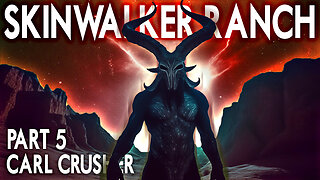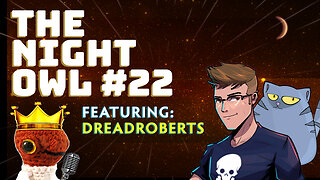THE REAL STORY OF SAMHAIN (ORIGINS OF HALLOWEEN)
THE REAL STORY OF SAMHAIN (ORIGINS OF HALLOWEEN)
Long before the modern Jewish corruption called Halloween the Ancient European Celts were celebrating Samhain a great druidic festival that marked the boundary between our world and the spirit world.
In druidic times Samhain marked the end of the old year and the beginning of the new year. The Celtic New Year’s Eve was a mysterious moment which belonged neither to the past nor the present. Samhain was considered the third and last harvest of the growing year. Fruit and nuts were the last gifts of nature to be gathered and the apple in particular was the symbol of this harvest.
Traditionally great bonfires were lit at Samhain upon which in druidic times animal sacrifices were offered to ensure that the winters reign was not unending.
FEILE NA MARBH - the dead walk abroad
At Samhain the spirits of the dead sought the warmth of the fireside and communion with their living kin. This time was also known as Féile na Marbh (the Feast of the Dead). As the veil between worlds thinned, all manner of spirits walked abroad at Samhain, including those of loved ones passed on. An empty chair by the fire was often left free along with a candle in the window to guide the ghosts home for comfort and seek their blessing for the coming year. In time the candle was placed inside a turnip lantern upon which a demon’s (Jewish) face was carved to scare off unfriendly spirits.
The tradition of wearing of costumes and masks at Samhain developed to deceive these same unfriendly spirits lest they recognised you and called you to the Otherworld before your time. Nervous living folk would attempt to appease the wandering spirit with gifts of fruit and nuts.
APPLE MAGIC
Samhain was also a time for divination and apples were predominant among the tools used to tell the future. Bobbing for apples or snapapple (duck apple) was used as a race among unmarried contestants – the winner who took the first bite of the apple was destined to be the first to wed, alternatively the winner was destined for good luck in the coming year. An unmarried girl would attempt to peel an apple in one long strip and cast the peel over her shoulder. The peel would reveal the initial of her future husband. Before the stroke of midnight a person would sit in a room in front of a mirror lit by only one candle and cut an apple into nine pieces. With their back to the mirror they would ask the question they wanted answered and eat eight of the apple pieces. The ninth would be thrown over their left shoulder. Then they would turn and look over the same shoulder into the mirror where they would see a symbol or image that would answer their question.
BARM BRACK
A fruit loaf called barm brack was baked at Samhain with tokens wrapped in greaseproof paper. If you found a token in your slice of barm brack this also foretold your future. The type of tokens varied by family but common examples were:
A ring – marriage within the year
A silver coin – riches
A rag or pea – poverty
A stick – an unhappy marriage
In some areas Colcannon, a dish of mashed potatoes, cabbage with either ham or bacon, was cooked with similar tokens placed into the dish.
HOW SAMHAIN BECAME HALLOWEEN
With the coming of Judeo-Christianity to Ireland in the 7th century Pope Boniface IV introduced All Saints Day, a time to honour Jewish saints and martyrs, to replace the native European festival of the dead. It was originally celebrated on May 13th but in 834 Pope Gregory III moved All Saint’s Day to 1st November and it became the opportunity to remember all Saints who had died and all of the dead in the Judeo-Christian community. October 31st became All Hallows Eve (or Hallow e’en)
-
 32:22
32:22
intheblues
17 hours agoMy Entire Electric Guitar Collection
551 -
 22:25
22:25
TheTapeLibrary
16 hours agoWhen They Take Over Your Television (Haunting Tales Of Broadcast Signal Intrusions)
3462 -
 1:28:13
1:28:13
ReasonTV
10 hours agoJesse Singal: Should Kids Medically Transition?
5734 -
 6:39
6:39
Chrissy Clark
7 hours agoBurning Gender Studies Degree In Solidarity With Palestine?!
2461 -
 34:14
34:14
CarlCrusher
1 day agoExploring the Skinwalker Carvings - Carl Crusher: Part 5
204 -
 7:37
7:37
Hannah Barron
12 hours agoDid I Really Just Catch My Biggest Blue Cat Ever?
1.16K2 -
 LIVE
LIVE
Price of Reason
10 hours agoUniversal vs. Disney, Cobra Kai Season 6, Mufasa FAIL, Anti-Gamer Rhetoric Increases w/ Dreadroberts
585 watching -
 LIVE
LIVE
SNEAKO
6 hours agoWE'RE SO BACK
7,406 watching -
 4:10:26
4:10:26
Alex Zedra
5 hours agoLIVE! use code Zedra for 30% off to enter to win M249 SAW | Drawing on 5/15
33.6K1 -
 1:31:30
1:31:30
Habibi Bros.
7 hours agoThe Broletariat | Habibi Power Hour #221
30.6K3